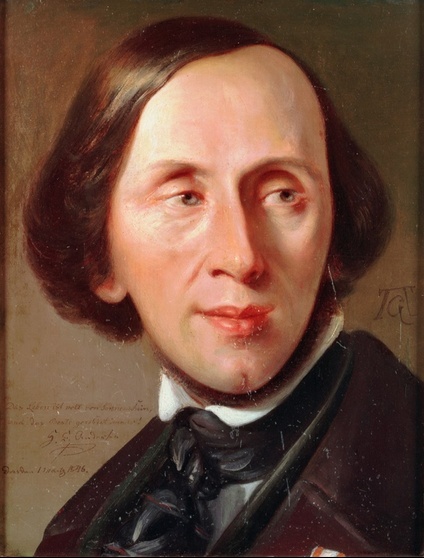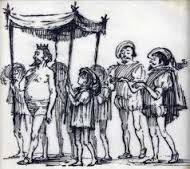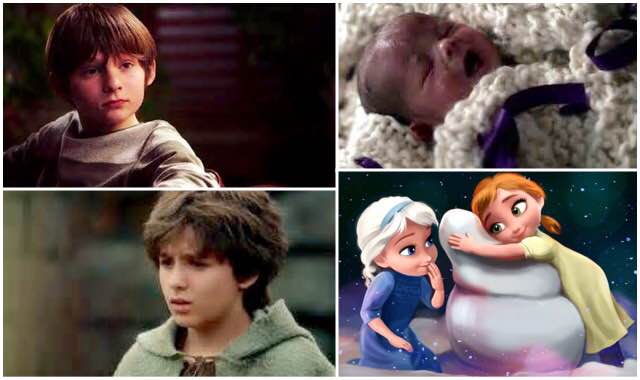|
Hans Christian Anderson: Seeing the World Through the Eyes of a Child by Teresa Martin--@Teresa__Martin Hans Christian Andersen was a Danish writer living from 1805-1875. He penned many of the great fairy tales, his stories making up the corpus of some of the classics including “The Little Mermaid,” “The Red Shoes, ”The Little Match Girl,” “The Ugly Duckling,” and “The Snow Queen.” The latter is the tale on which the Disney movie Frozen was loosely based and will play a large part on Once in the Fall. He was prolific, writing poetry and some adult literature, yet it is for his fairy tales for which he remains most famous. Andersen was unique in that most of his stories were not collections from oral folk stories, but inventions of his own and because of this some place him as a forerunner of the fantasy genre (4, 5 Wullschlager). Andersen’s stories also frequently feature the innocence, and therefore, wisdom of children. A biographer stated, ”Addressing himself to the child in the adult through a revolutionary shift in perspective, he gave voice through his characters to groups which had traditionally been mute and oppressed—the children, the poor, those who did not fit social or sexual stereotypes ” His stories indeed contain sophisticated themes. “ ‘The Emperor’s New Clothes’ and ‘The Ugly Duckling’ remain bywords for aspects of the human condition, while character emitting terror or sacrifice” (4,5 Wullschlager). “The Emperor’s New Clothes” is particularly a tale which epitomizes vanity, abuse of power, as well as the phenomena of mob behavior. In this story, there is an Emperor who wants new clothes, and swindlers promise to make him the grandest clothing in the realm. The clothes actually don’t exist, but all refrain from saying that the impostors have no clothes for him, afraid to tell the Emperor he merely thinks he is dressed. As more and more people join in to praise the non-existent wardrobe, nobody wants to stand out possibly facing the ruler’s wrath or being alone in stating this point. The climax of the story occurs when the Emperor makes an appearance, naked, before his subjects. The crowd praises the Emperor’s clothes with great enthusiasm. But tying into the theme of childhood wisdom, it is a little one who has the innocence and therefore the honesty to simply say, “But he isn’t wearing anything at all!” According to Maria Tatar, this story hence “contains an underlying fantasy about our cultural desire to unmask duplicity along with self-deception and to speak the truth, how painfully humiliating it may be to those in authority—or perhaps especially because it will be painfully humiliating (xxiv, 13 Tatar)” Pride and flattery from subjects can cause a ruler to lose sight of what is true. Moreover, history is littered with examples that end less happily than this tale, wherein the child who declares what is self-evident is rather an adult faced with punitive levies, prisons, or executioner’s blocks. All while the crowd cheers or fears to be alone in speaking up. If one is tempted to think that such things are in the past, and humanity has progressed past this, one has only to look to the headlines. As the saying goes, the more things change, the more they stay the same. Andersen’s writings, like all fairy tales, are ultimately not for the children. Children play the role of the wise child significantly in Once. Henry is the youth who, in deadly earnest, is a Greek Chorus providing commentary, wisdom, and warning to the main characters. Bae, the beloved child of Rumplestiltskin, sees immediately that his father’s choice was a disaster and implores his father to stop murdering. He also keeps reminding him that what his father was seeking, an inordinate desire to be respected and gain power, was nothing more than a delusion that would bring them misery. “I want my father back,” he begs. The young Rumplestiltskin had made similar pleas to his own father. Grace, the Hatter’s daughter, also shows such wisdom in a brief, but significant moment. As her father hesitates in reuniting with her, barely having the courage to even approach, she rushes to him the moment he calls and says with certainty, “You found me. I knew you would!” Once will likely continue this tradition with Elsa and Anna, albeit young women yet based on children in the original tale. And lest we forget, Emma has also been described, especially by the actress who portrays her, as “The Ugly Duckling,” the stigmatized baby duck who grows into a glorious swan. All of Hans Christian Andersen’s tales are worth a reading by both children and adults before September arrives when Once delves into this writer’s work more deeply. An exploration of them will also enhance any fan of Once’s appreciation for the drama and deeper themes that have, and will, be weekly presented to the audience. Works Cited Andersen, H. C., and Maria Tatar. The Annotated Hans Christian Andersen. New York: W.W. Norton, 2008. Print. Wullschläger, Jackie. Hans Christian Andersen: The Life of a Storyteller. New York: A.A. Knopf, 2001. Print.
0 Comments
Leave a Reply. |
OriginsExplore the Arthurian legend surrounding Lancelot, take a trip into the woods to discover the mythology behind Red Riding Hood or learn more about a modern day hero called Snow White. Origins provides unique insights and perspectives from talented writers into the characters we know and love, going far beyond the boundaries of Storybrooke. Archives
August 2016
Categories
All
|



